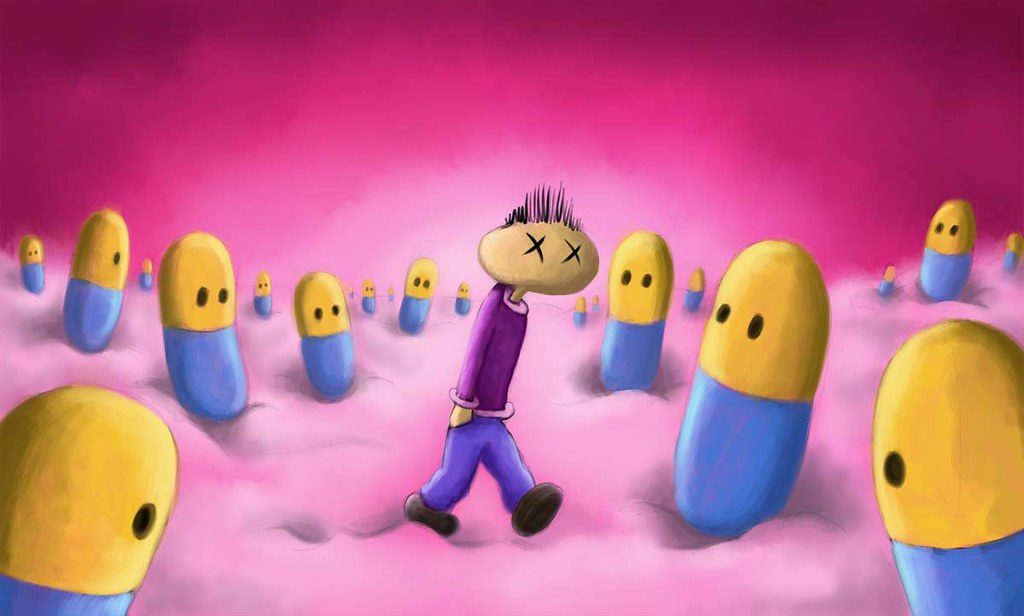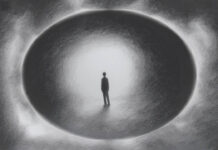In a review published earlier this month in Frontiers in Psychiatry, Daniel Safer and Julie Magno Zito explore and critique the recent increase in antidepressant medication (ADM) for youth diagnosed with major depressive disorder (MDD). They expose methodological limitations of the studies that are popularly cited to rationalize ADM prescriptions as first-line treatment.
At the essence of their paper is the contention that, “If one excludes the placebo substitution maintenance trials because of their serious methodological flaws ([…], then available research support for ADM treatment during maintenance for youth diagnosed with MDD loses its foundation.” Citing resemblances between the natural course of MDD, and MDD across points in treatment with ADM, they make the case that ADM treatment lacks sufficient support.

It wasn’t until the late 20th century that children began receiving depressive disorder diagnoses and corresponding treatments. Now, rates of MDD diagnoses continue to increase, and approximately one in nine adolescents satisfy diagnostic criteria for MDD. Many have called for increased appreciation for systemic contributions to widespread experiences of despair (e.g., environmental factors), yet treating symptoms at an individual level remains the standard approach.
Approximately one out of 15 children will be prescribed antidepressants by the age of 17, yet many recent studies have indicated the limited or minimal benefit of ADM use for children and adolescents. Additional research has challenged the notion that pharmacological interventions enhance the impact of psychotherapy among teens. Despite the abundance of noninvasive behavioral, psychological, and psychosocial therapeutic options available, research surrounding pharmacological interventions is better funded and associated benefits may be exaggerated.
Safer and Zito’s review captures a variety of studies and meta-analyses published between 2000 and 2018. Publications were gathered that reported the impact of ADM use on depressive symptoms in the context of short-term efficacy trials (approximately eight to 12 weeks in duration) and extension and maintenance trials. Other important, related factors, including, “tricyclic ADM efficacy and extended clinical trials before 1997, antidepressant adverse drug events, ADM maintenance treatment for OCD, trial vs. community rates of ADM non-adherence, or ADM outcome findings comparing NIMH vs. industry sponsorship,” warrant consideration but were beyond the scope of the review.
Findings from the review of short-term efficacy trials indicate “increasingly limited” support for ADM, with a trend towards “higher placebo responses.” Short-term trials seem to find larger effects of ADM use among adolescents with MDD diagnoses compared to younger children, but even these effects are “marginal.”
The authors also sought to address the following questions pertaining to extension and maintenance in clinical trials:
“How much is known about the long-term course of MDD in youth? Does the discontinuation of ADM in drug responders create problems? Does including an ADM along with a psycho-social intervention for MDD further improve outcome?”
Results indicate that following often selective eligibility procedures, youth who respond to short-term ADM treatment typically continue to experience benefits in a six- to eight-month extended ADM intervention period. Relapse was not thoroughly accounted for in publications identified, but when accounted for, relapse of symptoms occurred among approximately one-third of subjects receiving ADM treatment.
In extension trials, authors identified that dropout rates were quite high, with just under half of all original participants dropping out on average, and most extension trials were not controlled. Additionally, they noted numerous limitations to placebo maintenance substitution trials (in which participants who “experienced a response during short-term ADM trials […] are then encouraged to enter into a double-blind, placebo-controlled maintenance trial).”
Finally, Safer and Zito describe a few additional limitations to current research such as the exclusion of youth most vulnerable to relapse (e.g., females, individuals who report suicidality, and individuals with substance abuse challenges) from clinical ADM trials limiting the generalizability of results, patterns of bias in ADM efficacy trials, and more. Overall, this review provides an accessible synthesis of the theoretical and methodological issues that call to question the body of research promoting ADM in the context of MDD prescription among youth.
“Continued mental health intervention for youth diagnosed with MDD is usually useful and often necessary. Including ADM (apart from its “placebo impact”) during continued psychosocial treatment of youth with MDD requires far better evidence of benefit than is presently available.”
****
Safer, D. J., & Zito, J. M. (2019). Short- and Long-Term Antidepressant Clinical Trials for Major Depressive Disorder in Youth: Findings and Concerns. Frontiers in Psychiatry, 10. (Link)














Excellent!
Report comment
Sounds more like attempts to market antidepressants than to actually properly treat the youthful depressed, who will frequently respond to treatments that don’t use drugs at all, if the alleged professional knows anything real about the bio-social origins of depressed moods.
Report comment
“It wasn’t until the late 20th century that children began receiving depressive disorder diagnoses and corresponding treatments.” This was a very immoral choice.
Let’s be honest. Grown adults, who force treat children with mind altering and addictive drugs that have adverse sexual side effects, are appalling human beings.
Although, forcing, coercing, outright lying, and threatening people of any age, to get them hooked on the neurotoxic psychiatric drugs is immoral, too. But, of course, our psychiatrists have been denying the adverse effects of their drugs for decades. I’m not certain how this qualifies them as “experts.” But I’m pretty certain it qualifies them as liars and hypocrites, since all doctors – including the psychiatrists – are taught in medical school that both the antidepressants and antipsychotics can make a person “mad as a hatter,” via anticholinergic toxidrome.
End the psychiatric drugging, especially of children, but also of everyone else! Most certainly those who want to force drugs, known to make people mad, onto the masses, are actually the insane people.
Report comment
Great info
Report comment
Great article, great review. Just look at placebo response rate in the efficacy trials. So high the efficacy is negligible. Except fluoxetine, by a mile. What was different with the fluoxetine trial.placebo or the way this placebo arm was managed?
Report comment
My understanding is that the Fluoxetine trial was seriously flawed. I think Bob talked about that in Anatomy of an Epidemic, but I’m not totally sure.
Report comment
Wish they’d be a little more definitive in their conclusions: “The use of ADM for adolescent depressive symptoms is not supported, as the risks far outweigh the ostensible benefits.” Or “Doctors should not use ADM as a treatment modality for children or adolescents having depressive symptoms.”
Of course, the idea of “treating” depression is problematic in itself.
Report comment
Thank you Sadie.
I think first line of defense should be drugs. That is the stance of adult people who oversee young people. Once this is recognized by politicians as the false practice it is, then psychiatry will suggest mindfulness practice or “therapy”. Of course that will fail, so psychiatry then has a leg up, and maintains they were correct and Jenny does in fact need drugs. Perfect combo.
Take that drug money and take Jenny on a canoe trip. Give her a school that does not have a robotic curriculum. Don’t encourage her to see a therapist.
If you really want to prevent depression and suicide, give people a sense of belonging, a sense of success and a possibility that they can experience failure without feeling like one.
People are much too complex for drugs or a distanced fix it plan. All it ever does is create more problems.
Behaviourists and Psychiatrists are trying to create sameness and if that results in suffering, or not fitting in, it becomes an “illness”, only for the one displaying the signs that it is not a good fit.
Basically it tells everyone that you either fall into line, or we treat your difference as “illness”.
Politicians never ever look at the real message behind psychiatry and of course psychiatry always defends it’s stance by using EXAERATED and FAR FETCHED scenarios.
No one looks at WHY kids are now identified more often, why they are getting drugged, why are there more suicides, why we do not have alternative schools and communities.
In Canada, we have suicide epidemics on First Nations Communities. The “mental Health teams”, love to move in there and counsel everyone out of their ancestral pain, and give them antidepressants.
It is like a sick continuing joke.
Very frustrating when the adults who participate in these false stories are simply selfish self absorbed………..
Report comment
A lot of times the so called anti depressants are used to make people docile and manageable. It’s a lot like neuroleptic prescribing but the risks of massive weight gain metabolic disorders and TD are high enough with neuroleptics that the antidepressants are used instead. And so…
The data will show a lack of benefit because very concept of antidepressants is ridiculous. An unanswered question…one that is often not asked anyway…is why the helping professions are so controlling and cruel and why vulnerable people are subjected to drugging just for being human.
Szasz yet again: brain damage. Slavery. Medicalization of deviance.
Report comment